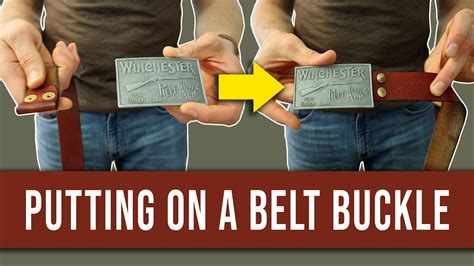The Simple Secret to a Perfectly Attached Buckle: A Guide to Secure Fasteners
Buckles. Seemingly simple, yet a poorly attached buckle can lead to frustration, discomfort, and even safety hazards. Whether it's a belt buckle, a backpack strap, or a dog collar, a securely fastened buckle is crucial. This guide delves into the often-overlooked secrets to achieving that perfect, reliable buckle attachment. We'll explore various buckle types and offer practical tips for ensuring your buckles stay put, every time.
What Types of Buckles Exist?
Before diving into attachment techniques, understanding the different types of buckles is essential. This allows for a more tailored approach to securing them. Common buckle types include:
- Tongue Buckles: These are the most common type, featuring a metal or plastic tongue that slides through a loop or slot.
- Roller Buckles: These buckles use a rolling mechanism for easy adjustment and secure fastening.
- Side-Release Buckles: These buckles feature a lever or button that releases the strap, often used for pet collars or backpacks.
- Loop Buckles: These buckles utilize a looped strap that passes through a metal or plastic frame.
- Automatic Buckles: Often used on seatbelts, these buckles automatically lock into place when correctly engaged.
Understanding the specific type of buckle you're working with will inform the best attachment method.
How to Attach a Tongue Buckle Securely: The Fundamentals
The seemingly simple tongue buckle often presents the most challenges. Here's the secret to a perfect attachment:
- Proper Alignment: Ensure the tongue is correctly aligned with the buckle's slot or loop. A misaligned tongue will lead to a loose and unreliable fastening.
- Full Insertion: Push the tongue all the way through the buckle until you feel a firm, secure connection. Partial insertion is a common cause of buckle failure.
- Check for Slack: After inserting the tongue, gently tug on both sides of the strap to check for any looseness. If there's slack, re-insert the tongue to ensure a tight fit.
Pro Tip: For added security, particularly on items carrying weight or subjected to stress, consider using a buckle with a locking mechanism or securing the end of the strap with a knot.
Why is My Buckle Coming Unfastened? Common Problems and Solutions
Several factors can contribute to a buckle coming undone:
- Worn-out Buckle: Over time, buckles can wear down, losing their ability to hold the strap securely. Replacing a worn-out buckle is often the best solution.
- Loose Strap: A loose or overly stretched strap can prevent the buckle from staying fastened. Tightening the strap or replacing it with a new one will resolve this issue.
- Incorrect Alignment: As mentioned earlier, misalignment is a major culprit. Always ensure the tongue is fully and accurately inserted.
- Material Degradation: Exposure to sunlight, chemicals, or extreme temperatures can weaken the buckle and strap materials, compromising their structural integrity.
How to Attach Different Buckle Types
While the principles remain similar, specific techniques apply to different buckle types:
How to Attach a Side-Release Buckle?
Side-release buckles require a simple push and click mechanism. Ensure the buckle is closed firmly until you hear a distinct "click". A gentle tug should confirm its secure position.
How to Attach a Roller Buckle?
Roller buckles are designed for ease of adjustment. Slide the strap through the roller mechanism until it's snug, then ensure the buckle is fully engaged.
How to Attach a Loop Buckle?
Feed the end of the strap through the loop and then firmly pass it through the buckle’s frame. Pull the strap tight to ensure a secure fit.
Beyond the Basics: Maintaining Buckle Longevity
Regular inspection and care significantly extend the lifespan of your buckles. Check for signs of wear and tear, such as cracks, rust, or fraying straps. Clean buckles regularly to remove dirt and debris that could interfere with proper functioning. Replacing worn-out buckles and straps proactively prevents unexpected failures.
By understanding the nuances of buckle types and applying these simple yet effective techniques, you can enjoy the peace of mind that comes with perfectly attached, reliable fasteners. Remember, a little attention to detail goes a long way in ensuring safety and convenience.

